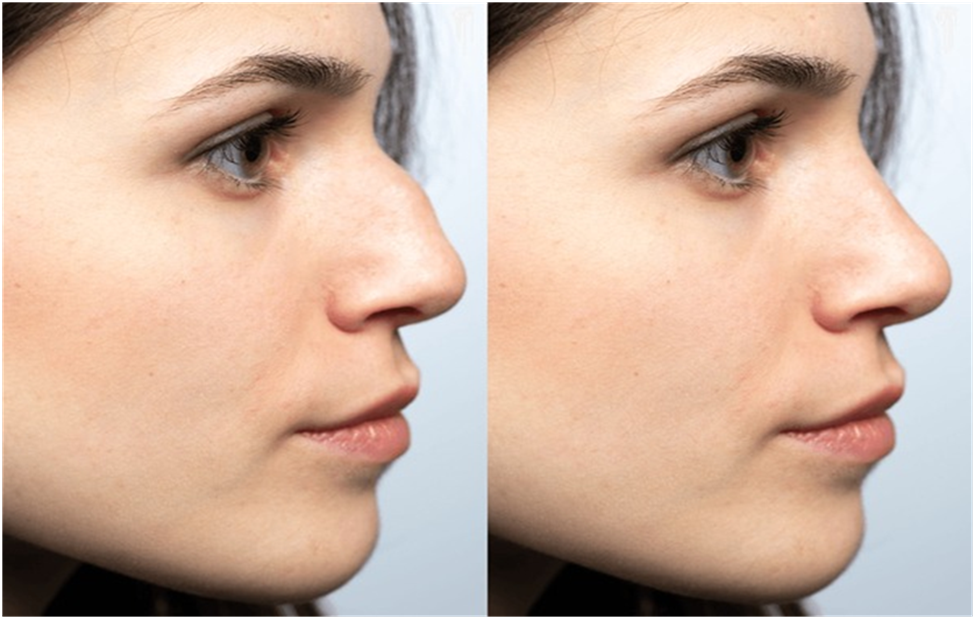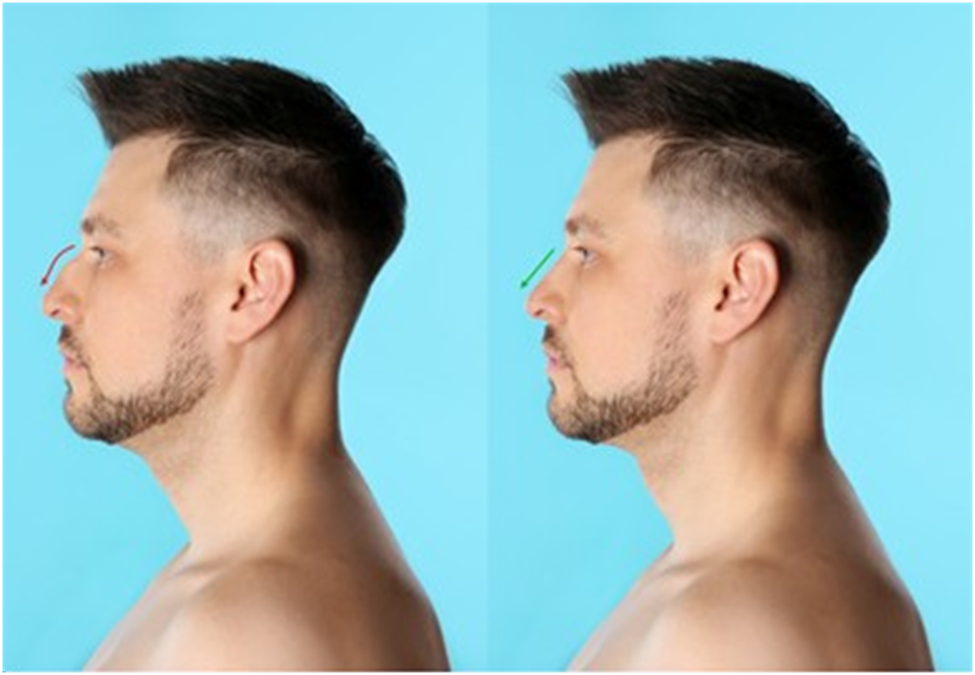When undergoing rhinoplasty, whether for functional or aesthetic reasons, it is common to have mixed emotions. Patients may feel excited and nervous about the initial stages of recovery and how their noses will look over time. Therefore, it is essential to understand the differences between the rhinoplasty 1 week vs 1 month milestones post-surgery. This knowledge can help manage expectations and ensure a smooth recovery process.
Dr. Deepesh Goyal, founder of Rejuvena Cosmo Care which is one of the best plastic surgery clinic in Jaipur has an expertise in rhinoplasty, understands the intricacies of this procedure. He guides patients through every step of their transformation, from consultation to recovery.
With Dr. Goyal’s personalized approach to patient care, you can rest assured that you are in capable hands throughout your rhinoplasty journey. He is known for his extensive knowledge and professionalism.
In this blog, we delve into the nuances of rhinoplasty 1 week vs 1 month post op and address common questions about recovering from rhinoplasty and the 1 week rhinoplasty swelling stages.
What To Expect 1 Week After Rhinoplasty?

- Swelling:
It is normal to experience significant swelling in the first week after nose reshaping surgery. This may cause your nose to appear larger than the final result.
- Bruising:
You might notice bruising around the eyes and nose. But it should gradually fade within the first week, improving your overall appearance.
- Discomfort:
You may experience some discomfort or mild pain after rhinoplasty. However, it can usually be managed with prescribed pain medications.
- Nasal Congestion:
Nasal congestion is common due to swelling and the internal healing process. It may affect one’s ability to breathe comfortably through the nose.
- Dressings and Splints:
Your surgeon may have placed internal splints and external dressings to support the nose during the initial healing phase. These may be removed at your follow-up appointment within the first week.
- Sutures:
If external sutures were placed, your surgeon may remove them during this time.
- Sensations:
You might feel tightness or numbness around the nose and upper lip.
Instructions:
Follow your surgeon’s instructions diligently for optimal healing and results.
“Everyone’s healing process is unique,” says Dr. Deepesh Goyal, a prominent plastic surgeon in Jaipur, Rajasthan. “Hence, following your surgeon’s post-operative care instructions properly is essential for the best results.”
Considering rhinoplasty but unsure where to start? Seek guidance from an experienced plastic surgeon.
Let’s explore the changes you can anticipate one month post-rhinoplasty.
What To Expect 1 Month After Rhinoplasty?

- Reduced Swelling:
By the 1-month mark, expect a significant reduction in swelling compared to the immediate post-op period.
- Improved Nasal Shape:
Your nose will start to take on its final shape. However, minor changes may still occur as swelling diminishes gradually.
- Increased Comfort:
Pain and discomfort should be minimal at this stage. Most patients feel more at ease with their new nose.
- Enhanced Breathing:
You may notice improved breathing abilities if your rhinoplasty included functional improvements, such as correcting a deviated septum.
- Continued Healing:
Most healing occurs within the first few weeks. However, your nose will continue to heal and refine its appearance over the coming months.
- Return to Normal Activities:
You can resume normal daily activities. However, based on your surgeon’s advice, you should avoid strenuous exercise and contact sports.
- Follow-Up with Your Surgeon:
Attending scheduled follow-up appointments with your plastic surgeon is essential. This ensures proper healing and helps address any concerns.
Want to understand the difference between the rhinoplasty 1 week vs 1 month post op? Let’s explore!
Rhinoplasty 1 Week Vs 1 Month

Monitoring Swelling and Bruising:
- At 1 week:
Expect significant swelling and bruising around the nose and eyes. Swelling peaks during this time. Focus on following your surgeon’s instructions and being patient.
- At 1 month:
Nose swelling post rhinoplasty gradually subsides, and bruising fades away. The nose shape starts to become more defined.
Managing Pain and Discomfort:
- At 1 week:
Discomfort and pain after rhinoplasty are common. You may also experience nasal congestion and pressure sensations. However, prescribed pain medication can effectively manage these symptoms.
- At 1 month:
Pain diminishes significantly. Most patients no longer require strong pain medications. Nasal congestion may persist but lessens over time.
Post-op Care:
- At 1 week:
Follow your surgeon’s post-op care instructions, including:
- keeping your head elevated
- avoiding strenuous activities
- keeping the nasal splint or dressing in place
- At 1 month:
Continue following post-op care instructions with reduced restrictions. You may gradually resume normal activities as your surgeon has advised.
Recovery Stage:
- At 1 week:
You’re still in the early stages of recovery, with noticeable swelling and limited mobility. Patience is vital as your nose begins to take shape.
- At 1 month:
You will notice significant improvements in swelling reduction and overall appearance by this time. However, the final results may take several months to manifest fully.
Want to explore your options for nose reshaping surgery? Schedule a consultation with a qualified plastic surgeon.
Uncover when you can expect to see the final results of your rhinoplasty.
How Long After Rhinoplasty Will I Look Normal?
After about two weeks, you should see noticeable improvements in your appearance as the swelling subsides. Any remaining bruising can easily be concealed with makeup.
Full results may take several months to appear as residual swelling continues to diminish. Everyone heals at their own pace, so be patient and trust the process. For optimal outcomes, follow post-operative care instructions.
Conclusion
Undergoing rhinoplasty is a life-changing experience that requires patience, trust, and expert guidance. For smoothly recovering from rhinoplasty, it’s crucial to understand the differences between the milestones of the rhinoplasty 1 week vs 1 month.
Dr. Deepesh Goyal, an expert surgeon for rhinoplasty in Jaipur, is here to guide you through every step of the journey. By choosing an experienced and caring surgeon like him, you can be confident that you are in safe hands.
Stay positive, embrace the process, and soon, you will enjoy the beautiful, natural-looking results of your rhinoplasty transformation.
Want to know if rhinoplasty is right for you? Connect with seasoned specialists for personalized advice.
FAQs:
Do you still have questions about rhinoplasty recovery? Explore our FAQs for expert insights.
- How strong is nose 1 month after rhinoplasty?
The nose typically gains strength within the first month after rhinoplasty. However, complete healing may take several months.
- What if you don’t like your nose after rhinoplasty?
If you are unhappy with your rhinoplasty results, discuss your concerns with your plastic surgeon to explore potential revision options.
- What can ruin rhinoplasty’s final results?
Several factors can impact the final results of rhinoplasty, including:
- poor surgical technique
- inadequate post-operative care
- unforeseen complications during healing
- How do I know if my rhinoplasty is healing well?
Signs of a well-healing rhinoplasty include:
- reduced swelling
- minimal pain
- the gradual emergence of your desired nasal shape
- How long do rhinoplasty results last?
Results are long-lasting, but due to aging and other factors, the nose’s shape may change subtly over time.

